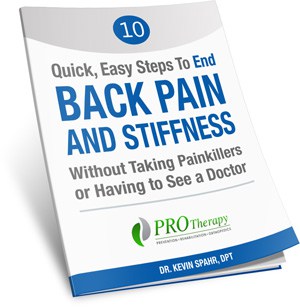Love it or hate it, winter is here. For those who play winter sports – casually or professionally – this is an exciting time to get back to the activities you love. And for the rest of us, it’s a season of shoveling snow, ice skating, and strolling through the Saint Paul Winter Carnival.
No matter what you’re doing this winter, it’s important to prepare your body for physical activity to avoid any preventable injury or pain. There are a few easy things you can start doing now to make sure your body is ready.
 Read Now: Are You Experiencing Pain This Winter?
Read Now: Are You Experiencing Pain This Winter?
How to Prepare Your Body for Winter Physical Activity: Remember “The ABCs”
When prepping your body for winter physical activity, it’s important to remember the ABCs of body prep: alignment, balance, and core training.
Alignment
No matter what physical activity you’re doing, proper body alignment is critical. This is true for all exercises and stretches as well. Be aware of the alignment of your body: your shoulders, your spine, hips, and feet.
Proper alignment looks a little different depending on your body’s position:
Standing: Imagine a string going from your head, to your shoulders, knees, and down to your feet. You want this string to be as straight as possible – no slouching or hunching.
Sitting: The ideal sitting position is your feet flat on the floor or a footrest, with legs uncrossed. Your knees should be at the same height or lower than your hips, and your ankles should be in front of your knees. Relax your shoulders and keep your forearms parallel to the floor, while sitting up straight and looking forward.
Activity: With dynamic activities such as skiing, ice skating, shoveling, etc. alignment can become a forgotten aspect with so much movement going on. It’s important to take mental snapshots during those activities of where you feel the weight of your body is positioned. A lot of our weight in these activities should be driven through our hips with our feet equally taking on the weight of our body. Placing weight into our hips allows us to better redirect forces of unknown nature like a bump while skiing or quick turn while ice skating.
Take time during the day – even when doing passive activities like using a computer – to consider the position of your body and fix your alignment.
Balance
Balance is obviously important for sports like skiing and snowboarding, but it’s also critical for any kind of physical activity. Practicing balance can be as easy as balancing on one leg for a few seconds before switching to the other. You may also want to consider investing in a balancing board for at home practice – spending some time each day practicing on the balancing board is a fantastic way to improve your balance. Balance can be progressed by performing exercises like a squat in a single leg or single leg assisted motion. A personal favorite of ours to challenge balance is the single leg romanian deadlift. This is a great way to not only challenge balance but hip strength as well.
Core Training
Core strength is vital for just about any sport – and important for daily life as well! Your core is what keeps your body stable.
We recommend strengthening your core at home by doing exercises like planks, crunches, and anti-rotational exercises.
How to do a plank:
- Roll out an exercise mat if you have one – if not, you can use a rug, bath mat, or towel.
- Get yourself in the plank position – face down with your forearms and toes on the floor, elbows directly under your shoulders and forearms facing forward. Look down at the floor.
- Engage your core by drawing your navel toward your spine. Keep your torso rigid and your body straight.
- Hold for 10 seconds, then release. Over time, you can increase your hold time.
How to do a crunch:
- Roll out an exercise mat if you have one – if not, you can use a rug, bath mat, or towel.
- Lie down on your back, with your feet planted on the floor hip-width apart, knees bent. Cross your arms over your chest.
- Engage your core by drawing your navel toward your spine, while inhaling
- Exhale and lift your upper body. Keep your head and neck relaxed but your core contracted.
- Inhale and return back to the floor.
Anti-Rotational Press (Pallof Press):
The Pallof Press is a great option with either cable machine or band to work on keeping your core stable in an “anti-rotational” concept. This means we are changing the amount of core activity with our arms. This is a great option if you have low back pain to learn how to brace your core without doing a lot of low back movement.
Regular Physical Therapy
With consistent physical therapy you should be getting care plans for stretches, exercises, and training that helps your body stay prepped, heal areas that are needed and avoid injuries. Additionally, working with a physical therapist will ensure a plan designed for your body, your ability level, and your preferred physical activities.
To sum it up, the best way to keep your body ready for the winter season – and avoid potential injury – is with regular physical therapy at PRO Therapy!
- Physical Therapy Programs for ACL Tear Recovery (And Prevention) - December 17, 2025
- Top Questions Women Ask About Pelvic Pain (But Are Too Afraid to Ask) - December 12, 2025
- Treating and Avoiding Hockey Injuries with Physical Therapy - November 26, 2025









